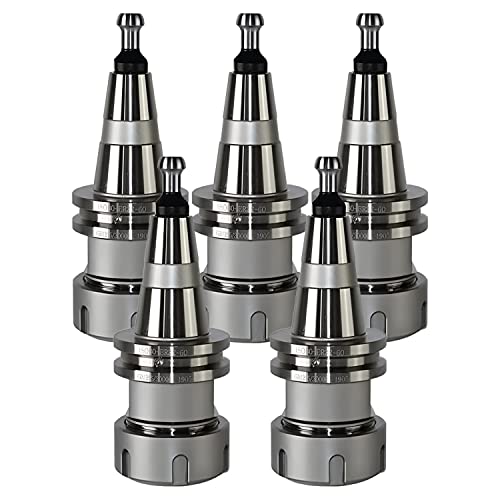- Joined
- Aug 25, 2007
- Messages
- 3,890
- Reaction score
- 715
More work done tonight. I finished machining the cams. Probably not quite as good a job as a cam grinder would do, but not bad.
I used the method prescribed by Randall Cox. The cam blanks are mounted on a 1/4" stub arbor which is affixed to the rotary table. The arbor is centered under the mill spindle. A boring head is mounted in the milling spindle with the boring bare turned inward toward the blank. The radius formed by the arc of the cutting tools is about 5/8" in. The boring bar tip is brought up to the edge of the cam blank. The repeated downward cuts are made with the mill/drill handle, advancing the x-axis into the boring bar cutter .010" each time. When one side of the cam blank is milled down to the primary radius of the cam, the x-axis is locked, then repeated downward cuts are made again, only this them, the rotary table is turned 2-3 degrees between cuts. This is continued on around until the the proper cam lobe is formed. After finishing one lobe, the cam blank is turned over on the arbor and the process is repeated on the second lobe. You have to do some kind of tricky calculations to figure out the starting and end positions on the rotary table to get the two lobes at the right angular separation, in this case 110 degrees. And, since the intake / exhaust valve configurations between the two heads are opposite, the two cam one cam segment wants the 110 degrees separation and the other wants a -110 degrees separation. Took me two days to figure out all the starting and end points! Chuck



I used the method prescribed by Randall Cox. The cam blanks are mounted on a 1/4" stub arbor which is affixed to the rotary table. The arbor is centered under the mill spindle. A boring head is mounted in the milling spindle with the boring bare turned inward toward the blank. The radius formed by the arc of the cutting tools is about 5/8" in. The boring bar tip is brought up to the edge of the cam blank. The repeated downward cuts are made with the mill/drill handle, advancing the x-axis into the boring bar cutter .010" each time. When one side of the cam blank is milled down to the primary radius of the cam, the x-axis is locked, then repeated downward cuts are made again, only this them, the rotary table is turned 2-3 degrees between cuts. This is continued on around until the the proper cam lobe is formed. After finishing one lobe, the cam blank is turned over on the arbor and the process is repeated on the second lobe. You have to do some kind of tricky calculations to figure out the starting and end positions on the rotary table to get the two lobes at the right angular separation, in this case 110 degrees. And, since the intake / exhaust valve configurations between the two heads are opposite, the two cam one cam segment wants the 110 degrees separation and the other wants a -110 degrees separation. Took me two days to figure out all the starting and end points! Chuck









































![DreamPlan Home Design and Landscaping Software Free for Windows [PC Download]](https://m.media-amazon.com/images/I/51kvZH2dVLL._SL500_.jpg)






















![TurboCAD 2020 Designer [PC Download]](https://m.media-amazon.com/images/I/51UKfAHH1LL._SL500_.jpg)
















